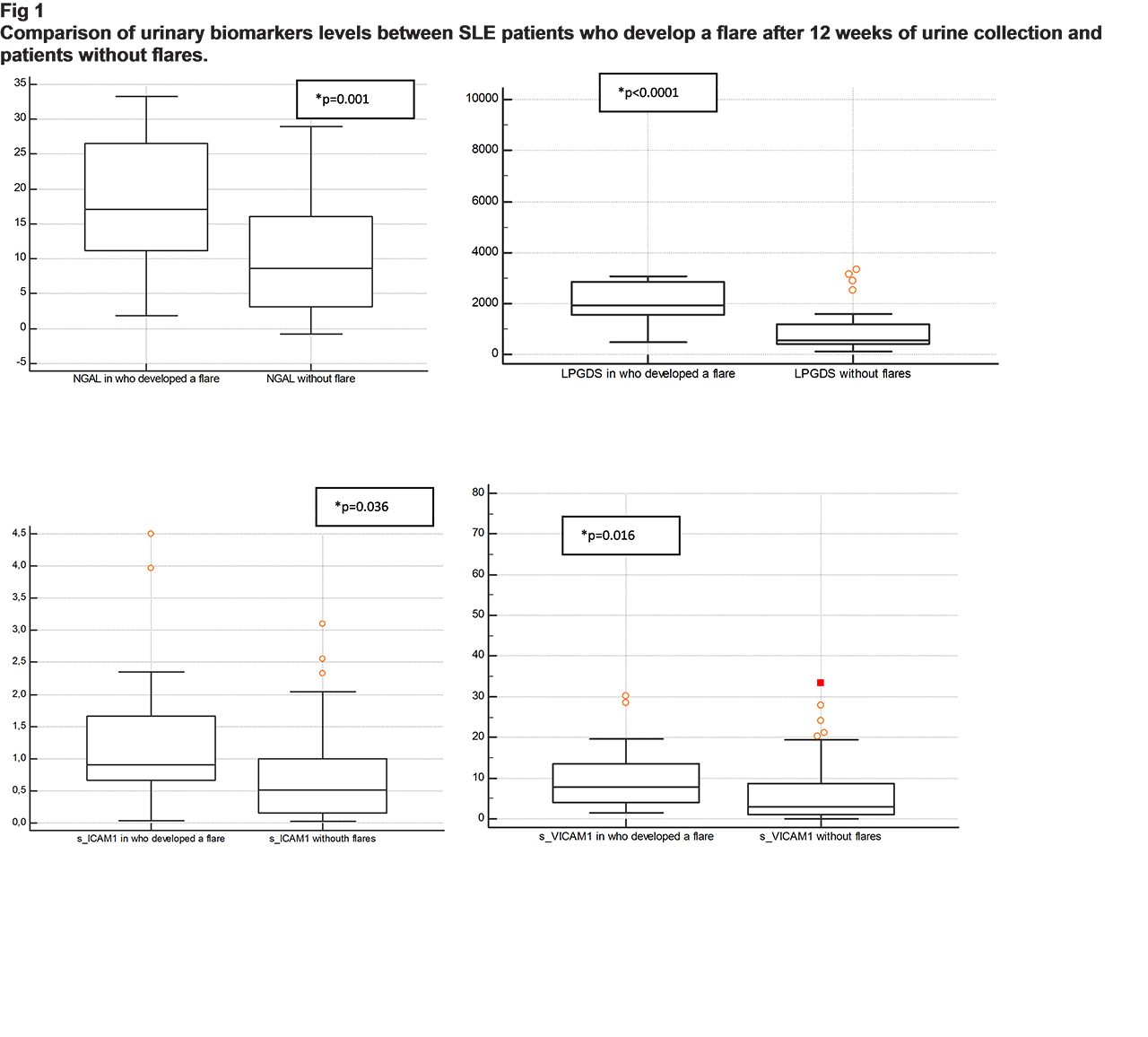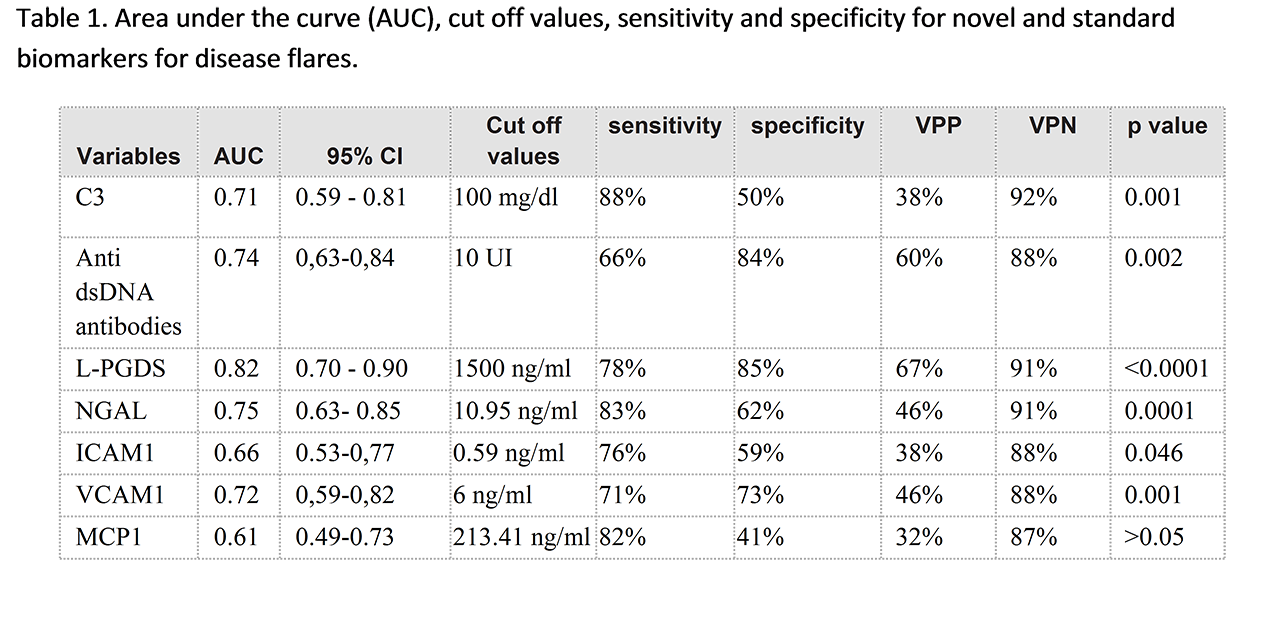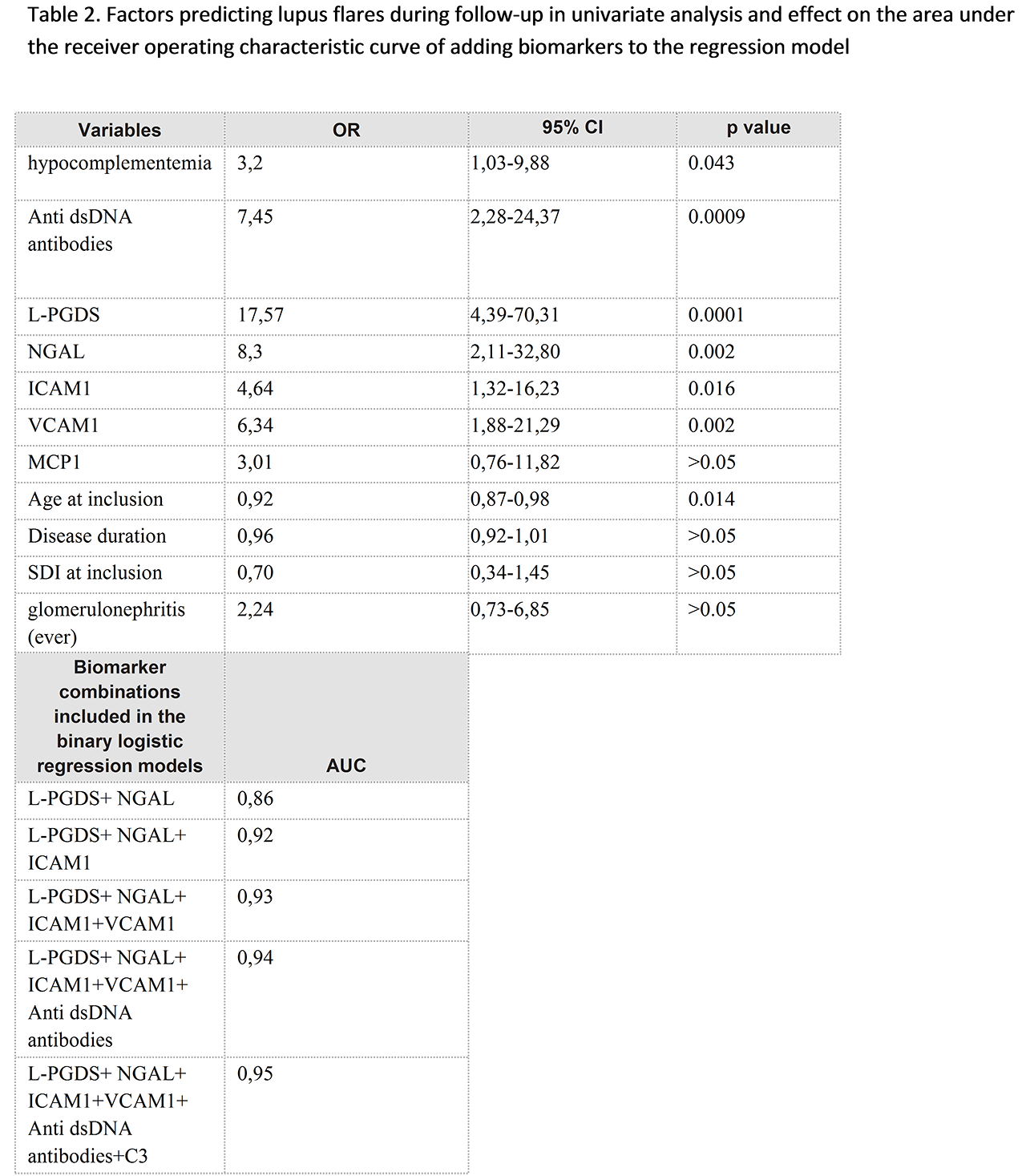Session Information
Session Type: Poster Session (Tuesday)
Session Time: 9:00AM-11:00AM
Background/Purpose: Systemic Lupus Erythematosus (SLE) is an autoimmune disease with a relapsing-remitting course. Uncontrolled lupus flares might lead to organ damage. The routinely performed biomarkers (antidsDNA Ab and serum complement) have a limited predictive value for the prediction of flares. Recent evidence suggests that novel urinary biomarkers, namely vascular cell adhesion molecule-1 (VCAM-1), intercellular adhesion molecule-1 (ICAM-1), monocyte chemoattractant protein 1 (MCP-1), Urinary Neutrophil Gelatinase Associated Lipocalcin (NGAL) and Lipocalin-type Prostaglandin D-Synthetase (L-PGDS) are able to discriminate between SLE patients with ongoing renal activity and those without nephritis (1-3).
Objective. To assess the ability of novel urinary biomarkers in predicting flares in comparison to the conventional biomarkers and to derive a biomarker panel which may improve diagnostic accuracy.
Methods: Urine samples were collected from patients prospectively followed at our clinic who fulfilled ≥4 of the ACR 1997 revised criteria for the classification of SLE (4) and who were in stable disease at baseline visit (no new features of lupus disease activity compared with the previous assessment). Flares were identified by SELENA flare index (SFI) after 3 and 6 months of urine collection (5). Urinary biomarkers levels were measured in the second void urinary sample by ELISA assay. Data were compared by the unpaired student’s t test or the Mann–Whitney U test as appropriate. Receiver operating characteristic (ROC) analysis was used to calculate the area under the curve (AUC) with associated 95% confidence interval (CI) to find the best cut-off values. Multiple regression was used to build models identifying independent predictors of disease flares.
Results: Urine specimen was collected from 71 patients, including 68 females and 3 males with a mean age of 44.4 years(±11.2) and a median SLEDAI2K of 2 (IQR 0-4). During 6 months-follow-up, 18 (25%) out of the 71 patients experienced a single disease flare. Among them, 8 episodes had renal involvement. Urinary L-PGDS, NGAL, ICAM-1 and VCAM-1 levels were significantly increased 12 weeks before a disease flare (p< 0.05; Figure1). Urinary MCP-1 levels were no significantly increased. Based on ROC analysis, urinary NGAL (AUC: 0.75) and L-PGDS (AUC: 0.82) outperformed conventional biomarkers (Table1). At univariate analysis(Table2), NGAL, L-PGDS, ICAM-1,VCAM-1, hypocomplementemia, anti dsDNA antibodies were predictors of lupus flares, while age at inclusion was protective. At multivariate analysis, antidsDNA antibodies and L-PGDS were independent predictors of lupus flares with OR=11.8 and 24.5, respectively. A combination of novel and conventional biomarkers demonstrated an excellent ability for accurately identifying a flare. (AUC >0.9; Table2)
Conclusion: This study has demonstrated the ability of a novel biomarker panel in predicting a lupus flare in its incipient phase. Further studies are needed to determine its clinical utility in everyday practice.
References
1.Rubinstein T, et al. Rheumatol Oxf Engl. 2010
2.Gupta R, et al. Clin Exp Rheumatol. 2015
3.Howe HS, et al. Int J Rheum Dis 2012
4.Tan EM, et al. Arthritis Rheum. 1982
5.Petri M. et al. NEJM 2005
To cite this abstract in AMA style:
Fasano S, Pierro L, Borgia A, Coscia M, Formica R, Riccardi a, Ciccia F. Development of a Biomarker Panel for Prediction of Disease Flares in Systemic Lupus Erythematosus [abstract]. Arthritis Rheumatol. 2019; 71 (suppl 10). https://acrabstracts.org/abstract/development-of-a-biomarker-panel-for-prediction-of-disease-flares-in-systemic-lupus-erythematosus/. Accessed .« Back to 2019 ACR/ARP Annual Meeting
ACR Meeting Abstracts - https://acrabstracts.org/abstract/development-of-a-biomarker-panel-for-prediction-of-disease-flares-in-systemic-lupus-erythematosus/



